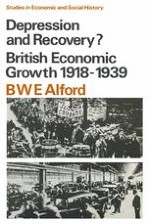1972 | OriginalPaper | Buchkapitel
Labour
verfasst von : B. W. E. Alford
Erschienen in: Depression and Recovery?
Verlag: Macmillan Education UK
Enthalten in: Professional Book Archive
Aktivieren Sie unsere intelligente Suche, um passende Fachinhalte oder Patente zu finden.
Wählen Sie Textabschnitte aus um mit Künstlicher Intelligenz passenden Patente zu finden. powered by
Markieren Sie Textabschnitte, um KI-gestützt weitere passende Inhalte zu finden. powered by
UNEMPLOYMENT levels have to be seen against the background of a substantial rise in the labour force between 1918 and 1939: the number of insured employees rose from 11.5 million in 1923 to nearly 16 million by 1939. It must be emphasised, however, that figures for the total labour force are subject to some significant margin of error. Estimates have to be made, since not all workers were insured and it is practically impossible to calculate what proportion of women can be counted as part of the labour force. Nevertheless, in broad terms, the increase resulted from a steady fall in the death rate so that the average age of the population and of the labour force was rising. This conjunction of factors led to a great deal of concern in some quarters because of fears of an eventual decline in total population with the consequent burden of an increasing proportion of retired people. Although these fears were not realised, the nature of the change in the population and the labour force did have immediate economic effects. It exacerbated the unemployment problem and reduced the level of occupational and geographical mobility.
